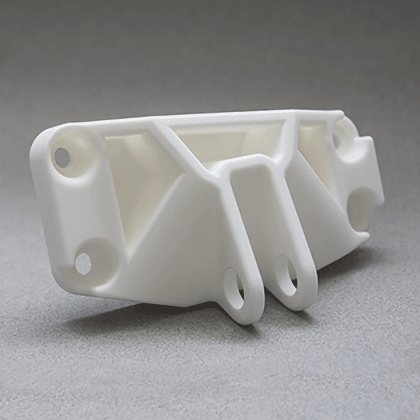Unlock the Future of Prototyping: Discover the Magic of SLS Services!
In today's fast-paced manufacturing environment, the need for rapid prototyping has never been more critical. Selective Laser Sintering (SLS) is a cutting-edge technology that has emerged as a frontrunner in the world of prototyping, enabling designers and engineers to create high-quality prototypes quickly and efficiently. This innovative process uses a laser to fuse powdered material into a solid structure, allowing for remarkable flexibility in design. As businesses across various sectors seek to accelerate their product development cycles, the demand for SLS prototyping services is on the rise. In this article, we aim to guide you through the essentials of SLS prototyping, helping you identify and connect with the right service providers for your needs.

Understanding SLS Prototyping
SLS prototyping is a sophisticated manufacturing process that utilizes a high-powered laser to selectively fuse powdered materials, typically plastics or metals, layer by layer. This technique begins with a 3D model that is sliced into cross-sectional layers, which the laser then sinters together to form a solid object. One of the primary advantages of SLS is its ability to create complex geometries that would be challenging or impossible to achieve with traditional manufacturing methods such as injection molding or CNC machining. The materials commonly used in SLS include nylon, polystyrene, and even metal powders, each offering distinct properties suitable for various applications. For instance, nylon SLS parts are lightweight and durable, making them ideal for functional prototypes and end-use parts. This flexibility in materials, combined with the technology's ability to produce intricate designs, positions SLS as a game-changer in prototyping.
Benefits of SLS Prototyping Services
Utilizing SLS prototyping services comes with a host of benefits that can significantly enhance your product development process. One of the most notable advantages is precision; SLS produces highly accurate parts with a level of detail that meets the demands of various industries, including aerospace, automotive, and healthcare. Speed is another critical factor; SLS can produce prototypes in a fraction of the time compared to traditional methods, allowing businesses to iterate quickly and bring products to market faster. Cost-effectiveness is also a key benefit, especially for small to medium-sized runs, where SLS reduces material waste and minimizes the need for expensive tooling. Moreover, SLS enables the creation of complex geometries, such as lattice structures, which optimize strength-to-weight ratios and improve overall performance. Companies in sectors like consumer electronics, where rapid innovation is essential, have successfully leveraged SLS prototyping to stay ahead of the competition, demonstrating the advantages of this technology.
Choosing the Right SLS Prototyping Service Provider
When it comes to selecting an SLS prototyping service provider, several factors should guide your decision-making process. Firstly, consider the provider's experience in the industry; a well-established company is likely to have a proven track record and a deeper understanding of specific challenges within your sector. Additionally, take a close look at the technology they use; advancements in SLS technology can significantly affect the quality and efficiency of the prototypes produced. Material options are another critical consideration; ensure the provider offers a range of materials that suit your project's requirements. Customer service plays a vital role as well; a responsive and knowledgeable team can provide invaluable assistance throughout the prototyping process. Lastly, reviewing portfolios and client testimonials can offer insight into the provider's capabilities and reliability, helping you make an informed choice.
Future Trends in SLS Prototyping
The future of SLS prototyping is poised for exciting developments as technology continues to evolve. One of the most anticipated trends is the enhancement of materials, with ongoing research leading to the creation of stronger, lighter, and more versatile powders for SLS applications. Improved printing speeds are also on the horizon, enabling faster turnaround times and increased production capabilities. Furthermore, the integration of artificial intelligence (AI) and the Internet of Things (IoT) into the SLS process is expected to revolutionize how prototypes are designed and produced, allowing for real-time adjustments and monitoring. As these advancements unfold, they will likely reshape the prototyping landscape, making SLS an even more attractive option for businesses looking to innovate.
Summary of SLS Prototyping Benefits
In summary, SLS prototyping services offer a range of benefits that can significantly enhance the efficiency and quality of product development. The precision, speed, and cost-effectiveness of SLS technology make it a compelling choice for industries looking to innovate and stay competitive. As you consider how SLS can benefit your projects, remember the importance of conducting thorough research when selecting a service provider. By choosing a partner that aligns with your specific needs and goals, you can unlock the full potential of SLS prototyping and pave the way for successful product launches in the future.







